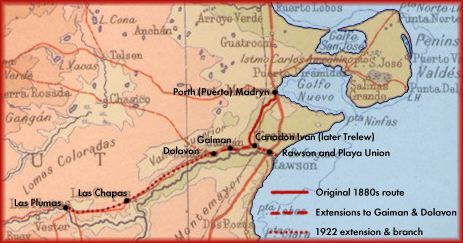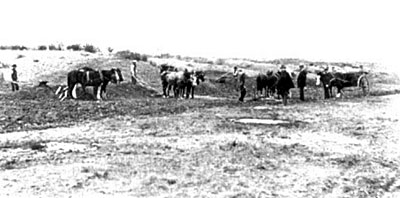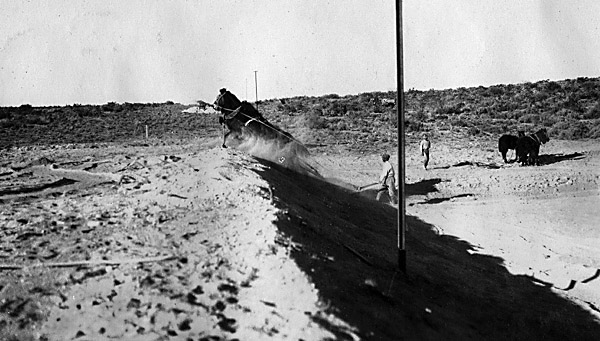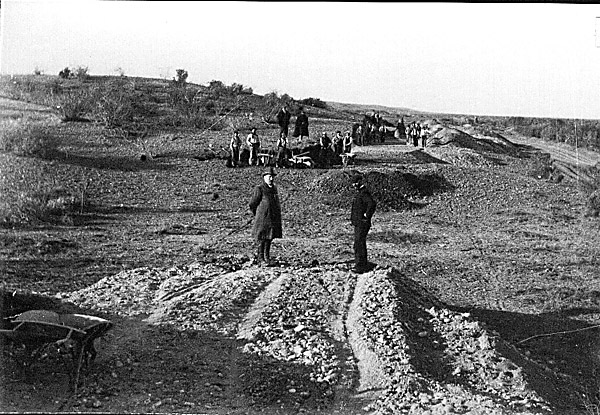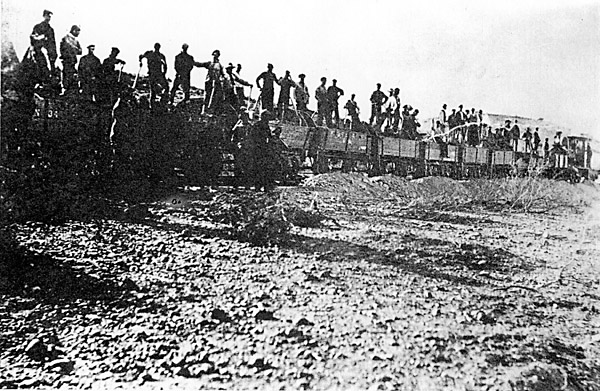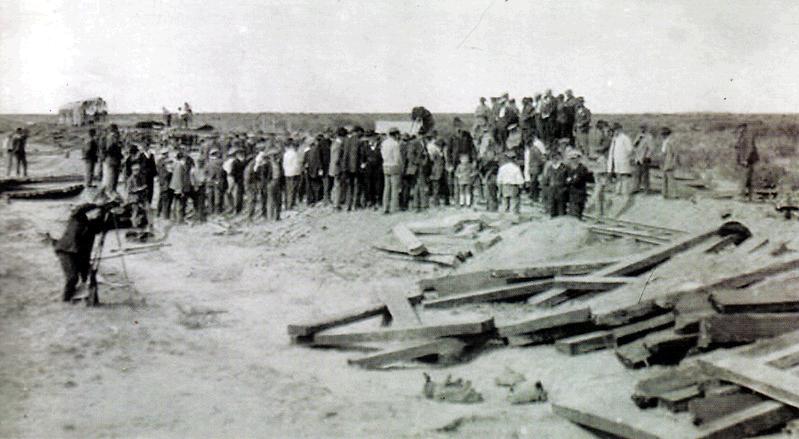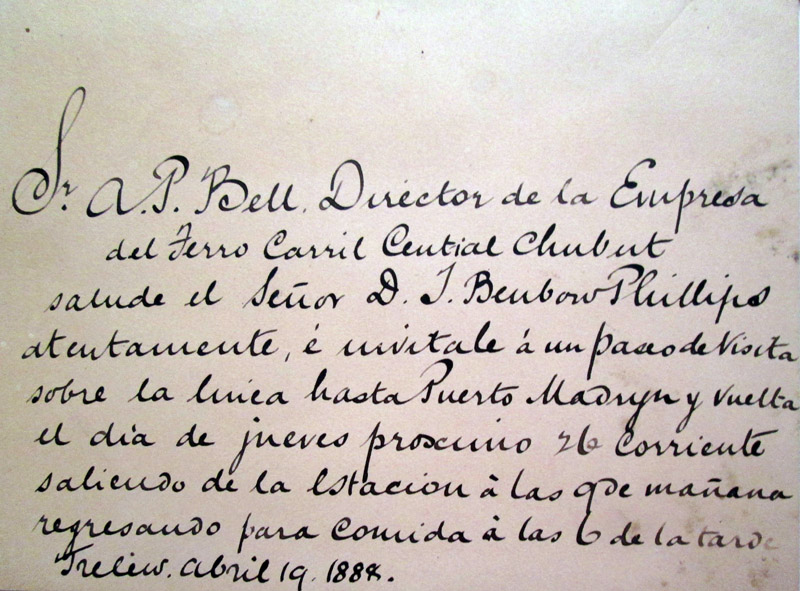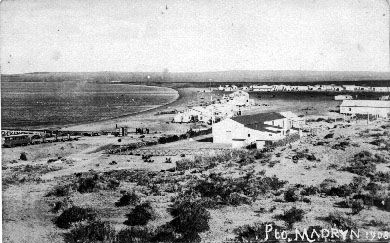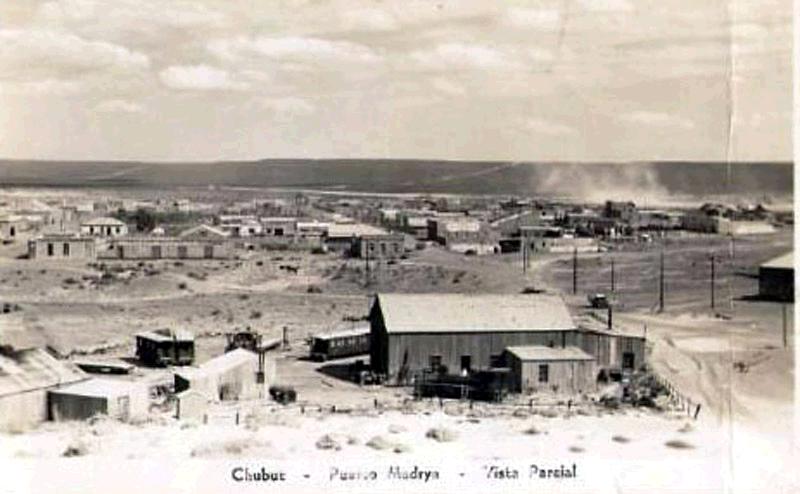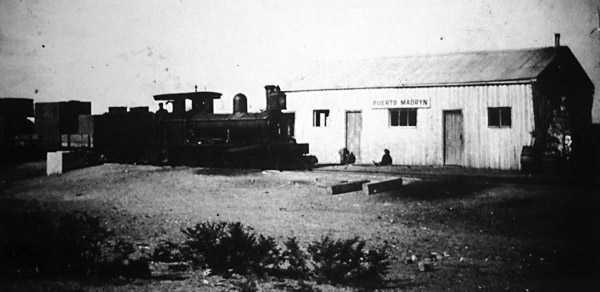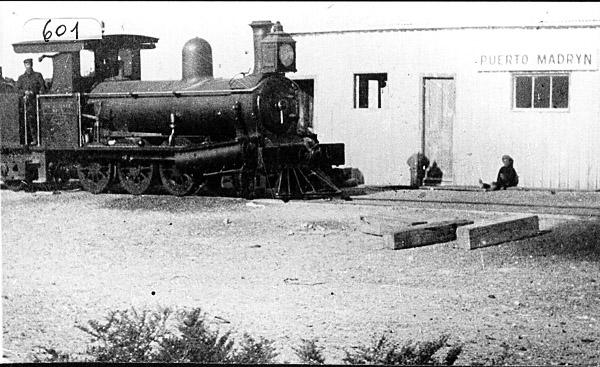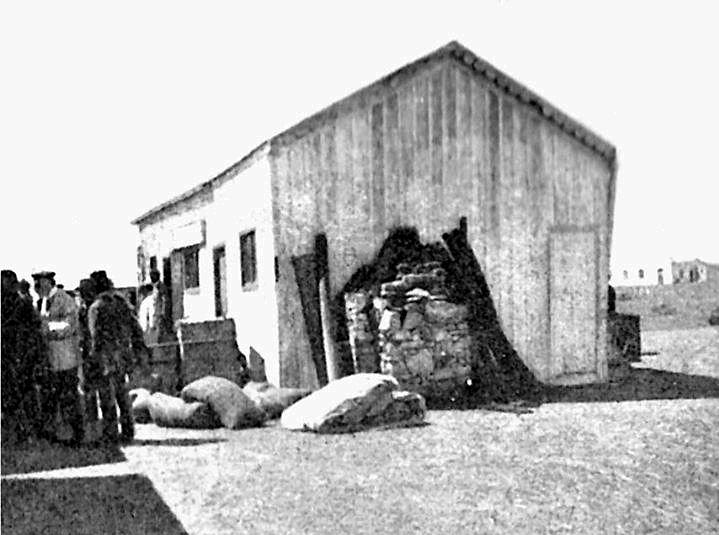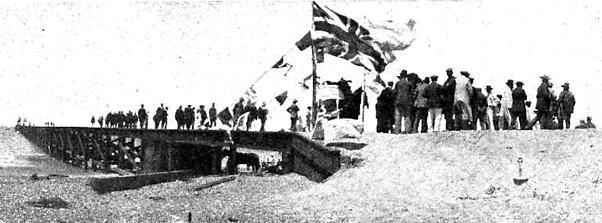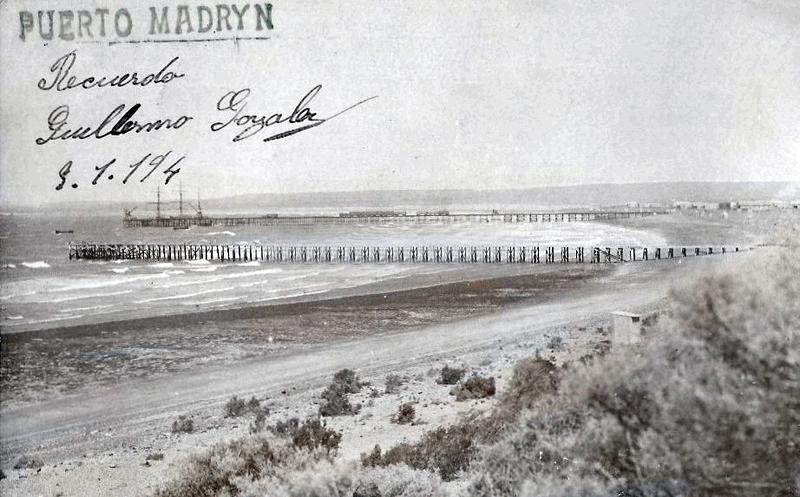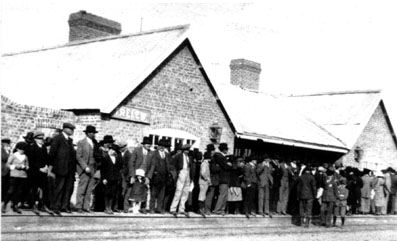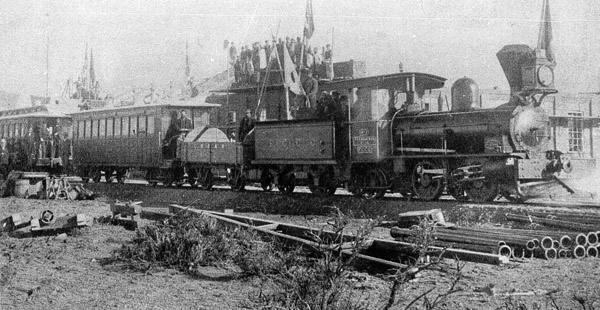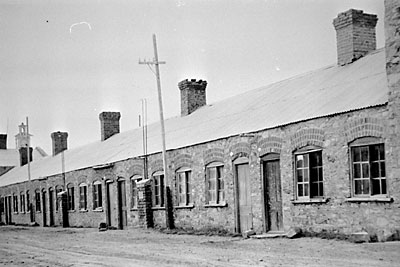 |
|||||||||||||||
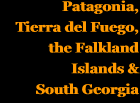 |
|||||||||||||||
 |
|||||||||||||||
 |
|||||||||||||||
Yet another Welsh narrow gauge railway! Lewis Jones' initiative An 1884 plan in Gaiman Museum (ironically, itself the old station building) shows a railway line which it was proposed to build between Puerto Madryn and 'Cañadón Ivan', a distance of 37 miles (approx. 59km.). The line was to be single track with a ruling gradient of 1 in 60 (1.66%) and a gauge of one metre.
Authorisation to start Whilst the company was authorised to raise £200,000 in £10 shares, only £36,000 was initially invested, almost entirely by the Chubut Company. This was a parent company, having the same directors and filing statutary reports for both companies simultaneously up to 1903. In fact the Chubut Company was contracted to do much of the initial work before the line opened, and it was they who ordered materials such as steel sleepers from Rhymney Iron Co., rails from the Ebbw Vale Co., and turntables from Isca Foundry (1). The Welsh connection will be obviously in the above names, though items such as locos and rolling stock came from across the border (locos from Sharp Stewart and Beyer, Peacock in Manchester, and rolling stock via the agents Bolling and Lowe from an as yet unidentified maker). On the 28th July 1886 the steamer 'Vesta' arrived at Puerto Madryn carrying 465 immigrants and materials for the line's construction. This day was the 21st anniversary of the founding of the Welsh colony. The day before it, coincidentally, was the day of registration of the FCCC company. Amongst the materials forwarded from the Museo Regional in Trelew are copies of the government Resolutions in 1884-6 concerning the railway. These are displayed on a separate appendix page, in both Spanish and English. Interesting features include the specification of the gauge – one metre – and a later note to the effect that the concession to build the line was being transferred from 'Luis' Jones and Co. to A. P. Bell. Sylvester Damus comments that this was common in such cases – Someone obtains the concession and then passes it on to the contractor and later to the operating company. In this case the final transfer to the company was approved by a decree of 5 May The start of the works All significant works have to start with a ceremony, the Central of Chubut was no exception. Rather than a big-wig digging the first sod with a silver bladed spade, a horse shovel was used, drawn by no less than four horses. Flags were flown, the Argentine to the left and the union flag to the right. To the right of the union flag are a number of men in uniform, no doubt representing the Argentine government. (1A)
.
Photos from the collection of the Centro de Estudios Historicos y Sociales in Puerto Madryn showing the 'terraplenes' (embankments and cuttings) under construction.
E. J. Williams Whilst he was eclipsed slightly by A. P. Bell who arranged much of the funding and oversaw the construction as a whole, Mr. Williams remained, and after a short period in 1888-9 when Henry Loveday was the General Manager, became the engineer and manager of the operating railway until 1907 (2). Mr. Loveday, incidentally moved on to the BAGSR, and eventually retired from the post of General Manager of the Central Argentine Railway (8) A. P. Bell Construction problems Many of the labourers had been signed up in Liverpool with promise of parcels of land to settle on when their three year contract was finished. They were not impressed to find that the promised plots at Kel-Kein further up the Río Chubut were of semi-desert scrub, or that their passage fares out had been deducted from their first wages. Captain Kennedy of HMS Ruby who visited the colony in May 1887 commented that one quarter of the workers had left and that the rest would have done so if they could (5). Eventually Engineer Williams was sent to Buenos Aires to sign up Italian workers. They seem to have been no more impressed but many of them did eventually settle on the coast, leading to a long-lasting rivalry between the mainly Italian town of Rawson and the Welsh communities such as Gaiman upstream. Slightly surprising is the fact that photographers were present at the meeting calling the strike by the workers during the construction of the railway in 1887.
The track was made up of 42lb rails (20.8kgs per metre) laid on steel sleepers at 1200 per km (6). The railway company also built the first bridges across the Chubut at Dolavon, Gaiman and Pont Hendre (Trelew) to ease the passage of ox-wagons bringing wool and wheat to the railhead. The Opening
Captain Kennedy also tried to foresee how the railway would operate once it was completed. He estimated that the works and equipment would have cost around £100,000. He comments that the colony's wheat exports were currently around 5,000 tons per year but were expected to rise to about 8,000, ie 80 trains at 100 tons per train; “which could hardly be deemed, even by the most sanguine, a very successful operation.” Passenger traffic he thought would be almost nil. 'Porth Madryn' The postcard reproduced below shows the scattered buildings of Puerto Madryn in 1908, with wagons and a carriage visible to the left.
Héctor Guerreiro kindly provided this early view, before the construction of the new station or the Chubut Mercantile Company's building. It looks down from the raised ground at the Manager's House. In the foreground is the loco shed, with coaches and a loco around the turntable.
The railway's starting point had a temporary station building for the first twenty years, and a jetty or muelle which could take vessels drawing fifteen feet at high tide. A train hauled by loco no. 3 at the original Puerto Madryn station. The strange vehicle behind the loco crops up in several pictures. It is probably an extra water tank for the loco.
A view from the west end of the building, with shadows showing that a train was standing in front of it.
These views were found on the Bahía sin fondo blog spot.
This view shows the opening of the original timber muelle with a Union flag very much in evidence.
The lower one is a view of the original muelle, with in the background the new metal one now in use. A condition of the concession for the new muelle was that the old one should be completely removed, though a recent report suggests that the remains of piles can still be found at low tide.
The route The extract below is taken from a Chubut land-ownership map of the 1920s. The railway can be seen pursuing a winding route up out of Pto. Madryn before striking away south-west straight across the meseta. There is then another winding gradient down into Trelew. The intermediate station at Llyn Aaron (Aaron's lake) is clearly marked. This being the 1920s, the railway's later extensions to Gaiman and Est. Valle Superior (Dolavon) can be seen heading westward up the Chubut Valley. The lands allocated to the railway company alongside its initial route are explicitly labelled. Finally, the large plots of land to be sold for estancias out on the pampa contrast greatly with the small 'chacras' farmed on the Chubut floodplain.
The story is told that the first through train from Puerto Madryn to Trelew made the 70 km journey in 75 minutes though the timetable eventually specified 135 minutes for the run. It appears however that the test train had been given banking assistance up to Km. 11 and had only comprised two wagons and a van. Trelew The photo shows Trelew Station with a considerable crowd of people. Was this an opening day picture? The station nameboard does not look brand new.(7)
Extensions References: 27-1-18 |
|||||||||||||||
Main pages
Appendices
Chapter 2
The Welsh-built Central Rly. of Chubut


